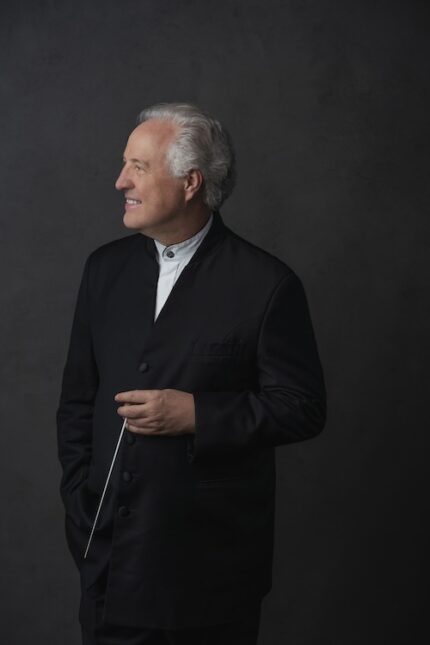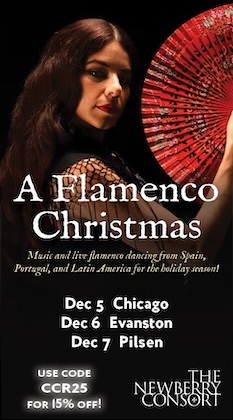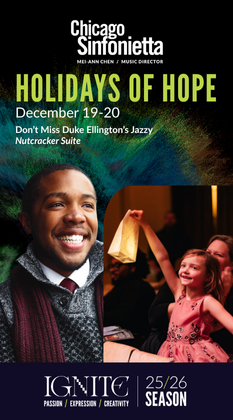Honeck, CSO present a fresh and compelling take on Mozart’s Requiem

Mozart’s somber Requiem in D Minor may seem like the antithesis of “pops” programming. Yet the composer’s unfinished swan song has become one of Mozart’s most-performed works, in no small part due to its prominence in the 1984 film Amadeus, adapted from Peter Shaffer’s play (which, serendipitously, is currently playing at the Steppenwolf Theatre).
Manfred Honeck returned to lead the Chicago Symphony Orchestra in Mozart’s Requiem Thursday night. This was a Requiem with a difference, however, as the Austrian conductor elected to perform K.626 in a unique version that presented the Requiem in an intriguing and often compelling light.
Honeck’s concept was to perform the Requiem as it might have been heard at the contemporary funeral service that marked Mozart’s death at St. Stephen’s Cathedral in Vienna. The result is a quasi-liturgical setting (no homily, fortunately), framed by tolling bells and interpolations of other sacred music by Mozart, as well as four relevant Gregorian Chants.
Textually, this performance only includes the music or sketches that Mozart completed up to the Lacrimosa, dispensing with Süssmayr’s Sanctus and Agnus Dei. Honeck provides a novel “completion” of sorts with a repeat of the Lacrimosa stopping exactly where Mozart’s work ended, followed by a pause and then Mozart’s Ave verum corpus, one of the most elevated sacred works written by Mozart or anyone else.
While the selections were chosen by Honeck with characteristic insight and intelligence, I’m not sure they always cohered convincingly or added anything essential to the Requiem (or vice versa), intriguing as this thoughtful presentation was as a one-off realization.
The primary practical benefit was the opportunity to encounter some supreme Mozart works that are infrequently heard in concert due to their brevity.
Jeanine De Bique’s pure-toned soprano soared in the “Laudate Dominum” from Mozart’s Vesperae solenne de confessore (Solemn Vespers for a Confessor). The secular Masonic Funeral Music fit fluently into the scheme, an austere work written by Mozart for the passing of two of his fellow Masons. And closing the Requiem performance with Ave verum corpus proved most effective with the Chicago Symphony Chorus’s rapt, hushed vocalism conveying the spiritual essence of this miniature. An off-stage contingent of fourteen male chorus members brought worthy monastic expression to the brief Gregorian chants.
But ultimately, it was the Requiem proper that provided the evening’s greatest rewards. Fielding a 94-member chorus, Honeck led a powerful yet well-balanced performance that was fully alive to the heaven-storming moments of the Kyrie and Dies Irae as much as the interior moments of pleading and spiritual solace. Honeck’s pacing was exemplary, smoothly navigating the potential landmines of the interpolations, giving space to breathe around each selection, and holding the silence for a good two minutes after the final bell toll to let the music and meaning resonate.
The performance benefited from a well-balanced quartet, notably the high, graceful singing of soprano De Bique, the vibrant tenor of Ben Bliss and the striking, dusky-toned mezzo of Avery Amereau. Stephano Park sounded outclassed in this company, his bass light and underprojected Thursday night.
Under the direction of new chorus director Donald Palumbo, the Chicago Symphony Chorus sang with daunting strength, flexibility and delicacy, as required. Less successful was articulation and clarity, with words too often turning into an undifferentiated blur.
The orchestra playing was inspired across all sections under Honeck with Michael Mulcachy lofting an elegant and noble trombone solo in the Tuba mirum from the back side balcony.
The Requiem was prefaced by music of Beethoven and Haydn.
Honeck led off the evening with Beethoven’s Coriolan Overure, directing a taut, incisive performance that imbued this familiar music with fresh drama and bite.
Honeck was on the podium for the CSO’s last performance of Haydn’s Symphony No. 93 in 2014, and Thursday’s reprise was in the same tradition. Honeck brought fleet tempos and fine transparency, eliciting lithe and buoyant playing from the strings, particularly. The conductor effectively set up Haydn’s comedic bassoon blat in the slow movement. And while the finale isn’t one of Haydn’s most knee-slapping closers, Honeck’s deft dynamic marking and the CSO’s quicksilver agility made for a stylish and spirited coda.
The program will be repeated 7:30 p.m. Friday and Saturday and 3 p.m. Sunday. cso.org
Posted in Performances





Posted Nov 21, 2025 at 11:56 pm by Alex Rodriguez
I was there for the performance tonight on the 21st. Simply stated, I don’t think I’ll ever hear anything like it ever again. The last piece was stunning. The silence at the end of the musicians, the chorus, and especially the crowd sitting in absolute silence and still for almost 2 minutes after the requiem ended was something I had never seen before. It literally gave me goosebumps.Putting a perfect ending to this requiem.
I left feeling like I had just seen something historic. Honeck and the CSO were amazing, and so were the chorus. Historic!
Posted Nov 23, 2025 at 2:16 pm by James ORR
Kudos to the audience, for the rapt attention they gave to the music throughout, including the fading away of the final orchestral bell stroke.
Posted Nov 24, 2025 at 3:46 pm by GCMP
A fellow concert-goer Thursday said “He made music out of silence”